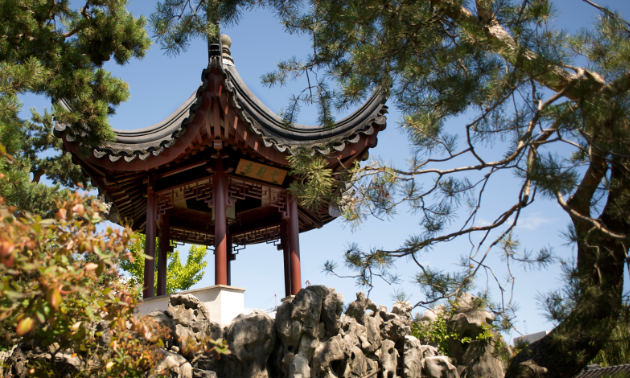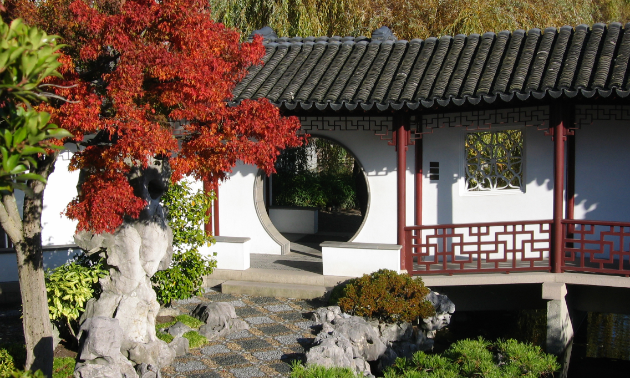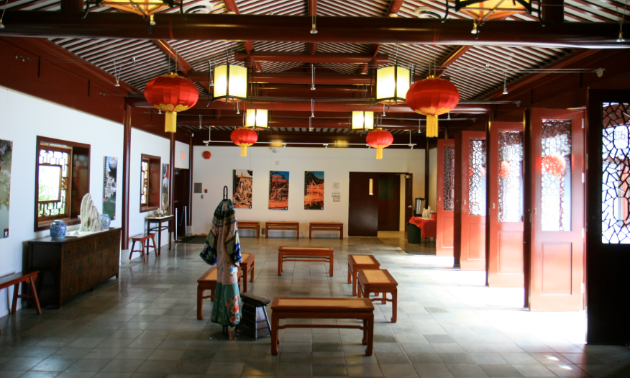A little piece of tranquil China in bustling Vancouver
Discover the natural beauty of Chinatown within Vancouver’s classical Chinese garden

Vancouver is a world-renowned city for its many attractions, one of which is Chinatown. Within this historic section of Vancouver lies the tranquility of Dr. Sun Yat-Sen Classical Chinese Garden. The garden is a cultural heritage gem where both tourists and locals can enjoy a moment of serenity away from the bustle of downtown Vancouver.
Unlike a botanical garden, the classical Chinese garden does not display plants based on scientific studies. Instead, it focuses on the juxtaposition between human-made buildings and nature. “While all elements in the garden are considered important, most of our visitors enjoy the contrasting view of the Ting (Chinese gazebo) and Vancouver’s cityscape,” said Debbie Cheung, marketing and communications manager for Dr. Sun Yat-Sen Classical Chinese Garden. “The naturally formed Tai Hu rocks from Lake Tai in China are also popular.”
History lesson
Modelled after a Ming Dynasty (1368–1644) scholar’s garden-home, Dr. Sun Yat-Sen Classical Garden was a collaborative project between the Canadian and Chinese governments. Fifty-three master-craftsmen from Suzhou, China, worked along with local architect Joe Wai and Don Vaughan to build the first full-scale classical Chinese garden outside of China. The garden was completed just in time for Expo ’86.

The garden resides beside Dr. Sun Yat-Sen Park and a statue of Dr. Sun Yat-Sen is located at the entrance of these beautiful locations. Both the garden and park are named after Dr. Sun Yat-Sen because of his contribution as the founding father of modern China. From 1910 to 1911, Dr. Sun made visits to Vancouver and Victoria to raise funds for the revolution against the imperial Qing government.
The four elements
Visitors can learn about the history and design of the garden through a complimentary guided tour. Docents are on hand to talk about the four elements of classical Chinese gardens:
- Architecture—as presented through the interconnected buildings
- Plants—including trees, flowers and bushes
- Rocks—Tai Hu rocks and the pebbles of the mosaic floor
- Water—as reflected in the garden’s pond, which is connected with the adjacent public park
Plants play a vital role in the design of classical Chinese gardens. “We have a variety of species in the garden, which makes it always green and blooming,” Cheung said. “For example, the evergreen pines and junipers are valued for their age and wild spirit, often seen as a symbol of longevity in Chinese culture. We also have a penjing (bonsai in Japanese) collection of miniature trees that visitors can enjoy from the spring to the fall.”

There are plenty of reasons to make return trips to the garden. Depending on the season, the flora may look completely different than previous visits—lush green in the summer versus the golden foliage in the fall. Penjing workshops and community events also attract visitors to come back again, with the Year of the Dog Temple Fair celebration this past February as an example. Visitors who are interested in learning more about the garden and Chinese culture are welcome to join one of their talks or workshops.






